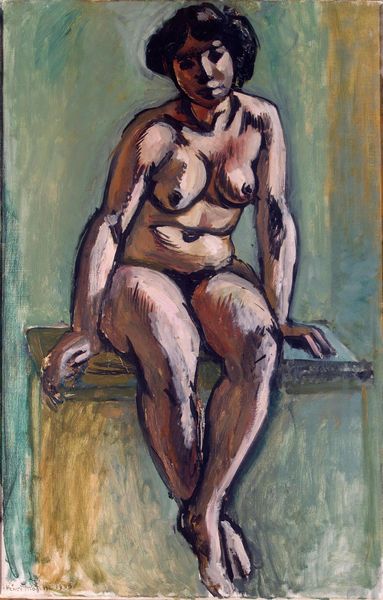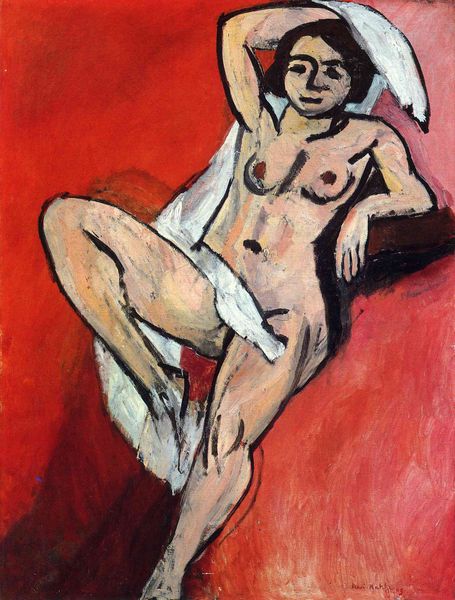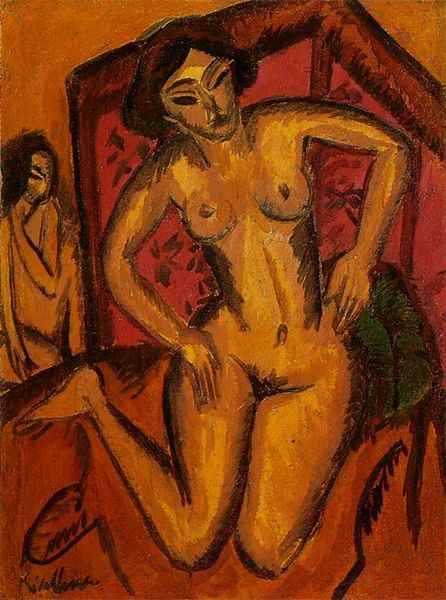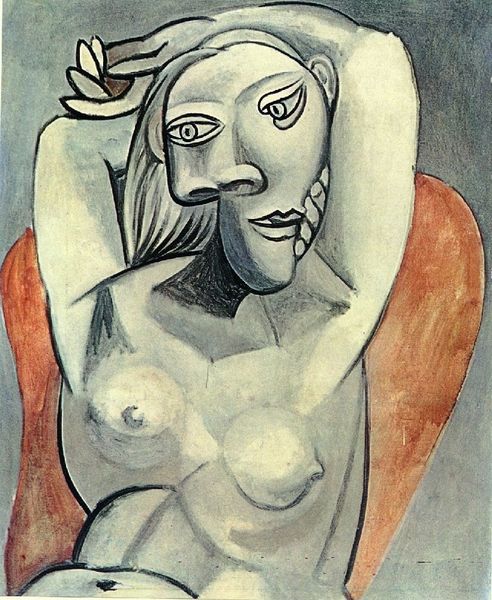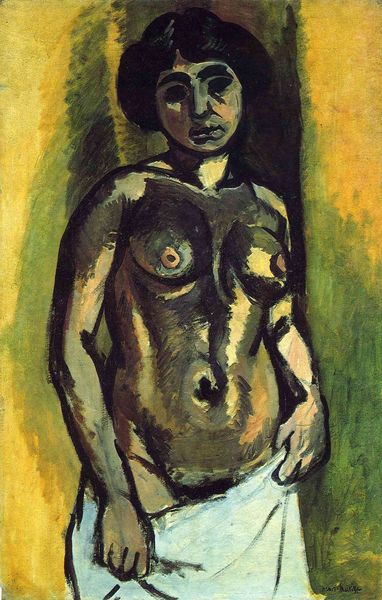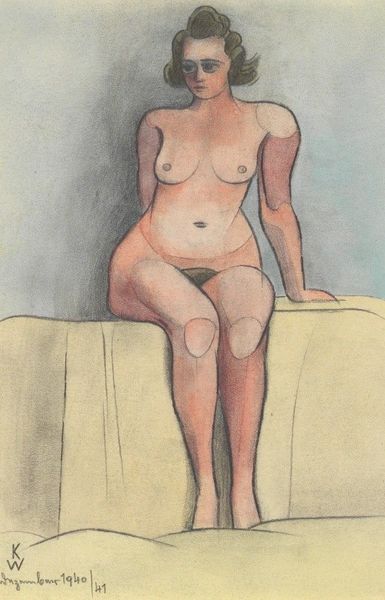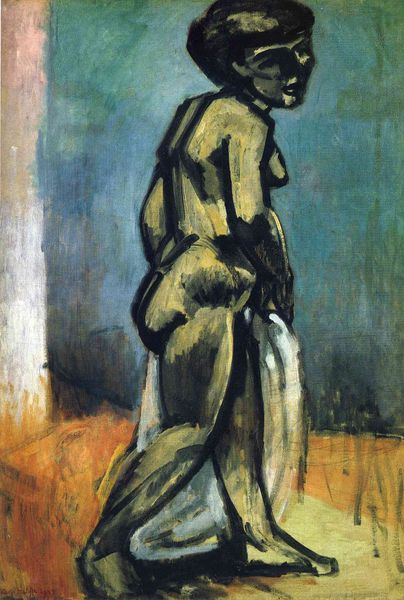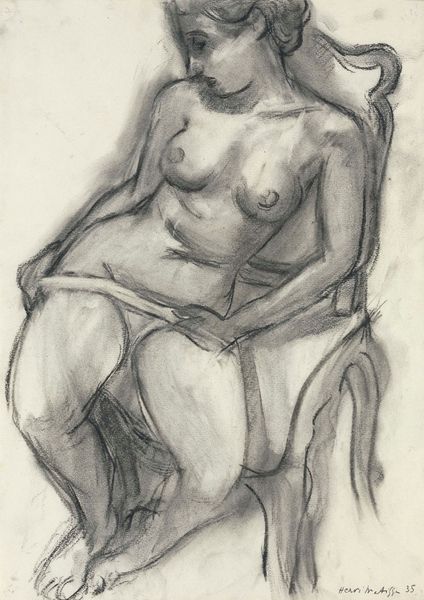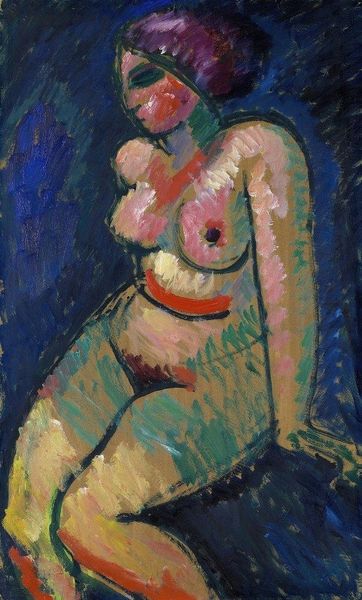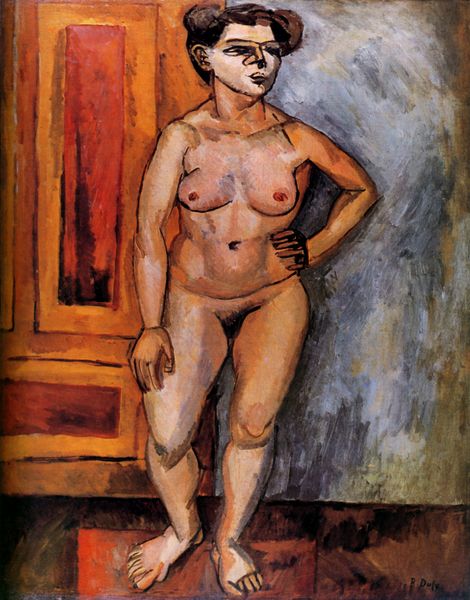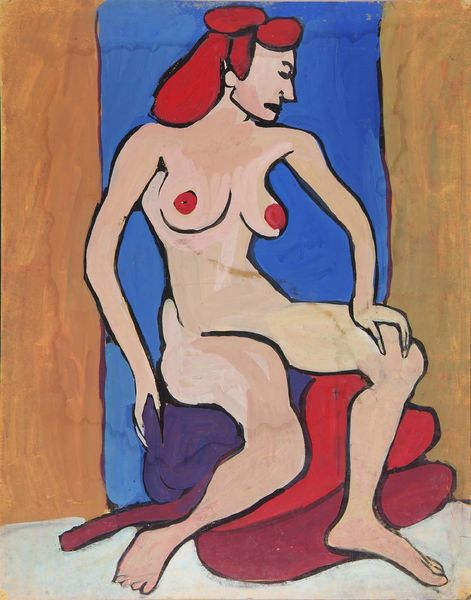
Dimensions: 130 x 97 cm
Copyright: Pablo Picasso,Fair Use
Editor: Here we have "Crouching Female Nude," an oil painting created by Pablo Picasso in 1956. The monochromatic palette makes me feel like I am looking at a sculpture rather than a painting. How would you interpret this work? Curator: Observe how Picasso uses impasto, creating texture that deviates from a conventional portrait. Note the strategic placement of light and shadow; they contribute to the illusion of three-dimensionality despite the fragmentation typical of Cubism. It is interesting how the manipulation of form becomes the primary conveyor of meaning, superseding any realistic representation. Editor: So, the subject itself isn't as important as how he paints it? Curator: Precisely. Consider the distorted proportions, the deliberate disjunction of anatomical parts. Picasso directs our gaze not to the likeness of the model, but rather to the painting’s internal structure – its balance of mass, line, and tone. We might ask: What new understanding of the human form arises through this reconstruction? Editor: It's almost like he's challenging the viewer to piece her back together. Curator: Indeed. The essence lies not in replicating reality, but in generating an alternative visual language. The muted tones and somewhat harsh brushstrokes, create a tension, perhaps indicative of the artist's complex relationship to his subject. It is a work deeply invested in the very act of seeing and representing. Editor: Thank you. I didn’t think about focusing so much on the brushstrokes rather than the woman, so I appreciate a new lens. Curator: My pleasure. Art reveals itself through close inspection, as well as the ability to look beyond initial impressions.
Comments
No comments
Be the first to comment and join the conversation on the ultimate creative platform.
